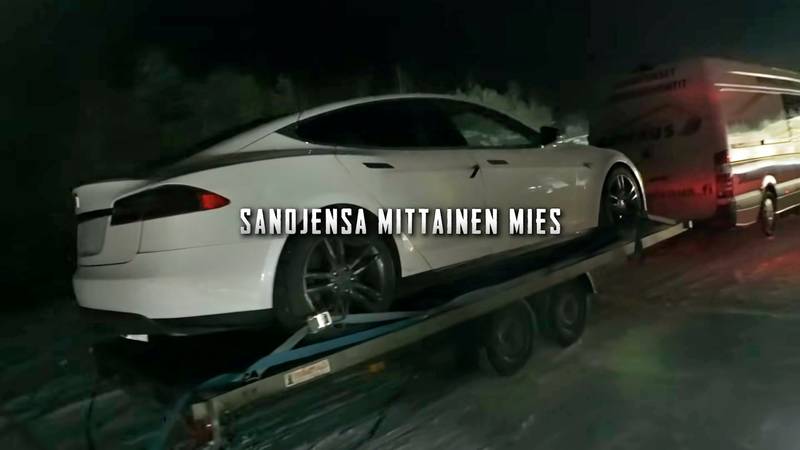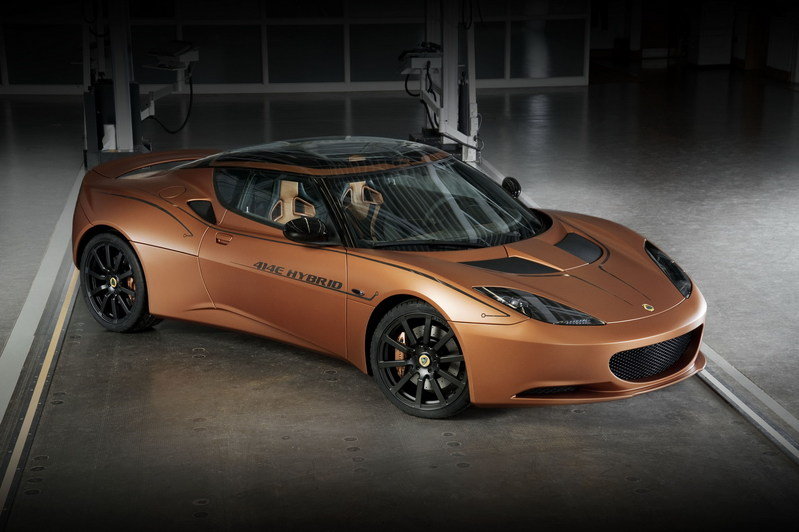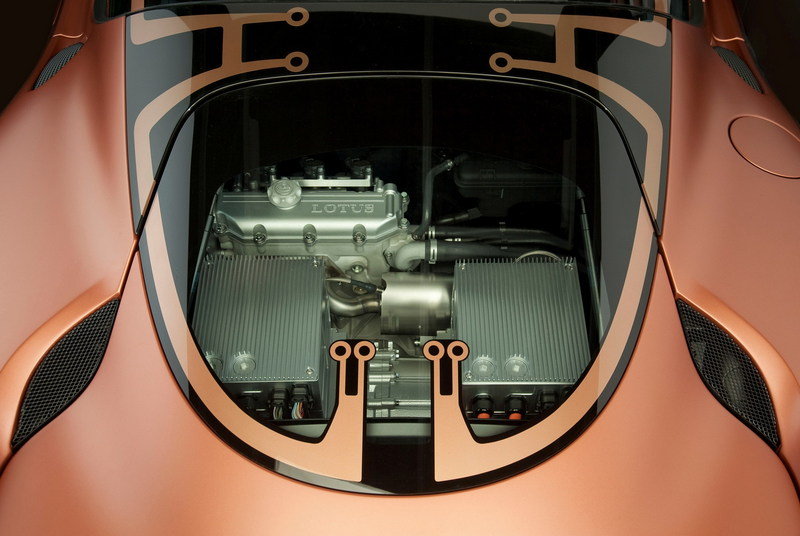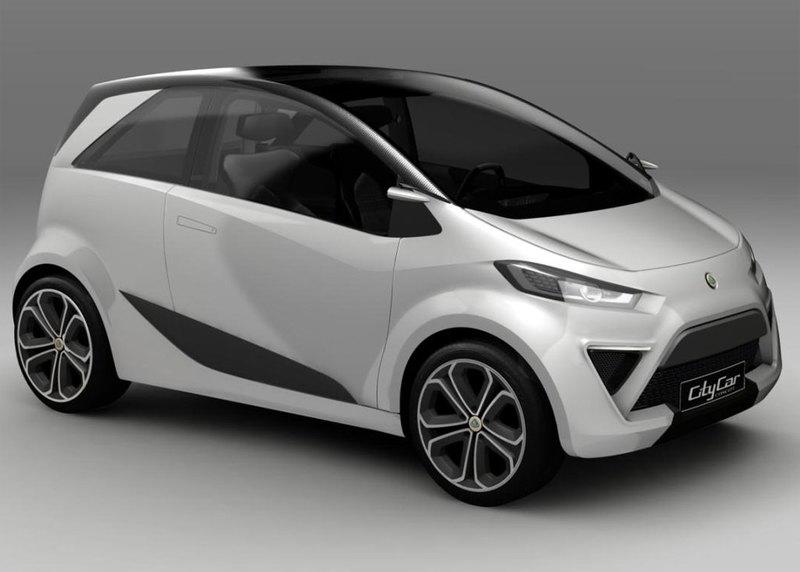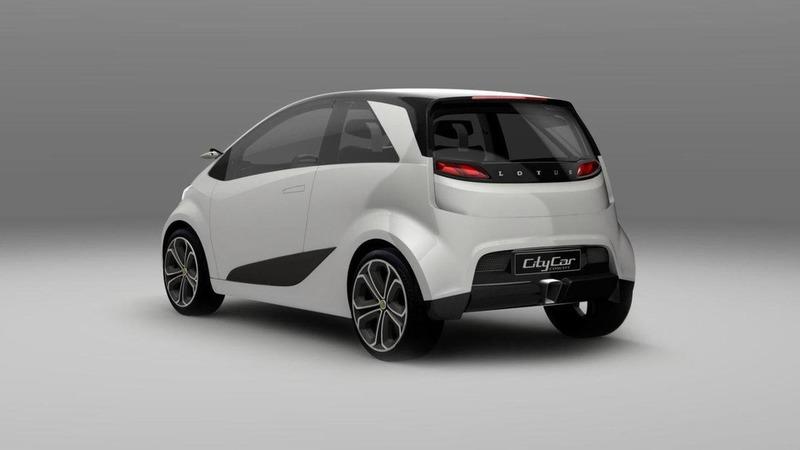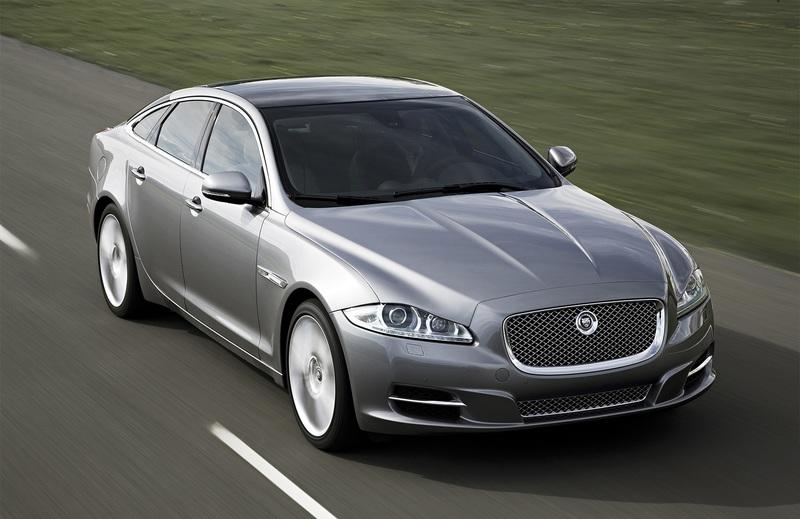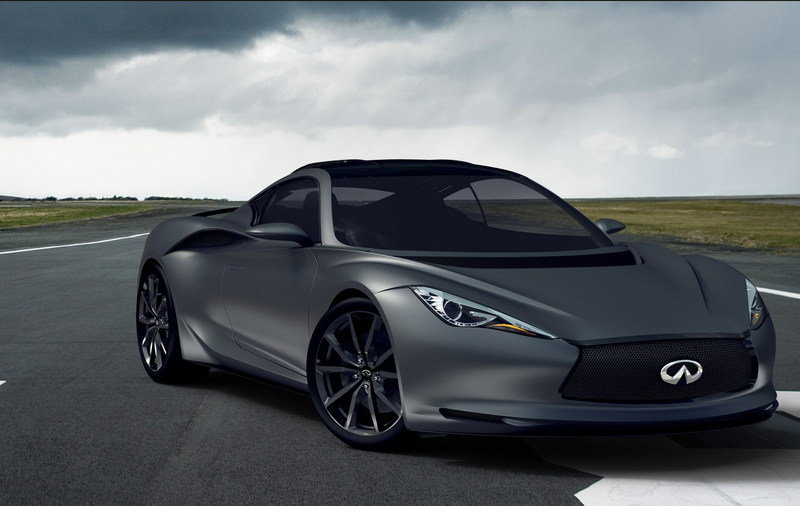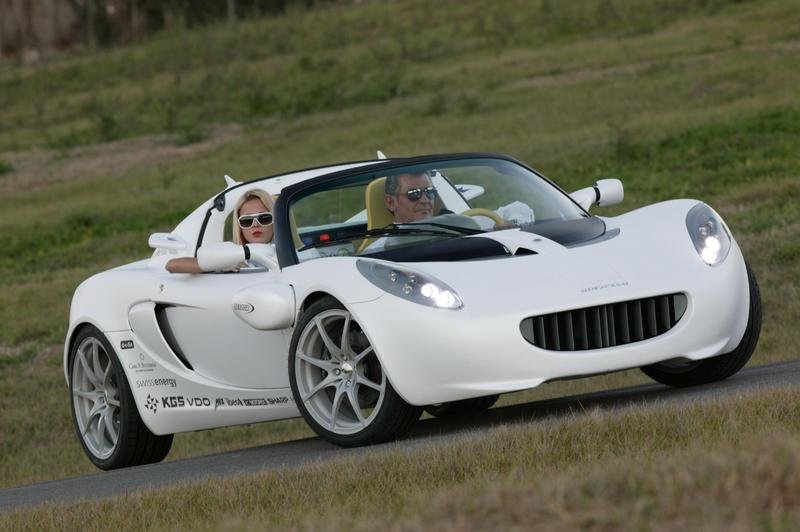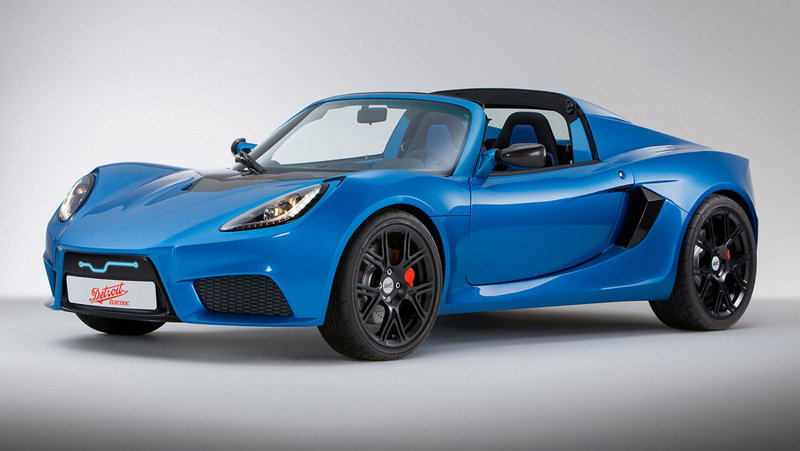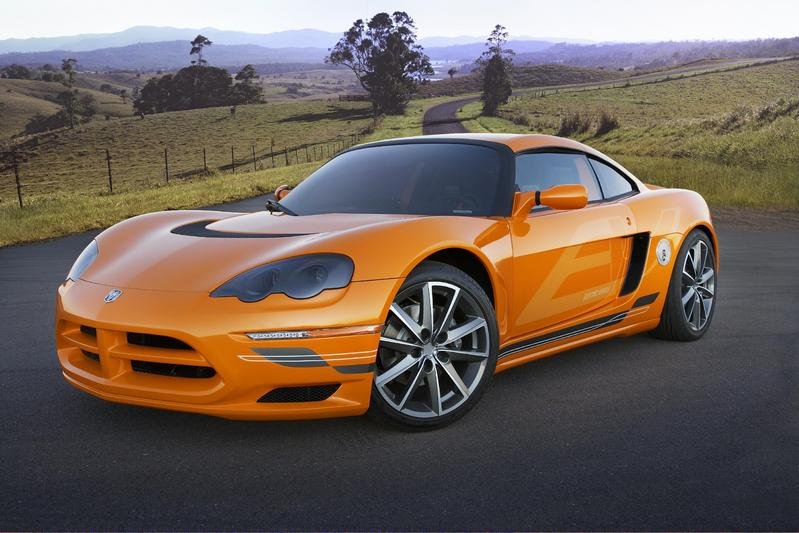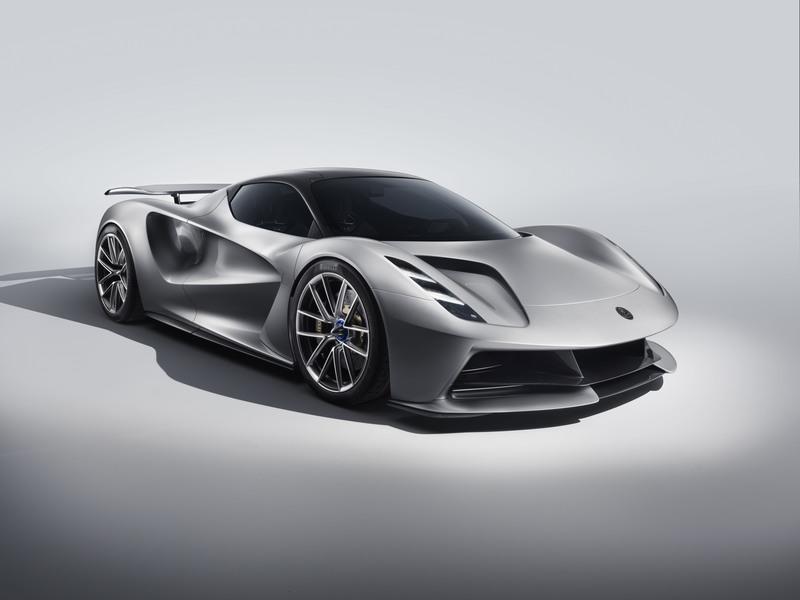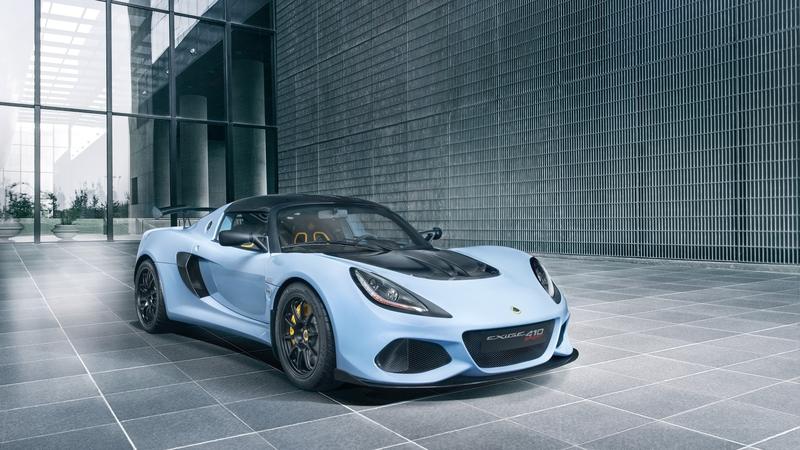Lotus Rolled Out a Couple of Hybrids in 2010
The electric motors generated an impressive 402 horsepower and 738 pound-feet of twist
It’s not very clear as to when Lotus started working on electric and hybrid drivetrains, but it unveiled its first electrified vehicle in 2010, at the Geneva Motor Show. It’s called the Evora 414E Hybrid and, not surprisingly, it’s based on the Evora sports car. The 414E Hybrid was a regular Evora inside and out, except for a new digital display that monitors battery power and usage, but featured a different drivetrain under the shell.
The main highlights were the electric motors powering the rear wheels. A first for the British brand, these motors generated an impressive 402 horsepower between them. The torque figures was even more impressive at 738 pound-feet of twist. Although these motors would have been powerful enough for the Evora 414E, Lotus opted to add a range extender in the form of a 1.2-liter three-cylinder engine. The addition of this mill turned the 414E into a hybrid.
The electric motors mated to a single-speed transmission developed specifically for this car
The drivetrain functions like that in a Chevrolet Volt. The engine, which can run on either methanol or ethanol gasoline, kicks in only when the battery is depleted. It also starts under hard acceleration that would drain the battery quicker than usual. The engine, rated at only 47 horsepower, was developed by Proton, the Malaysian company that owned Lotus from 1996 to 2017.
The electric motors were mated to a single-speed transmission developed specifically for this car. To enable a sportier feel behind the steering wheel, Lotus fitted the car with paddle shifters and a system that mimics a transmission with seven gears. In reality, these gears are just adjustments of the electric motor’s torque, but they’re enough to make it feel like a gear shifted. Quite clever.
Performance-wise, the Evora 414E was no slouch. With both the electric motors and the gas engine in use, the coupe needed 4.3 seconds to hit 60 mph. The 414E’s top speed is also quite high for a hybrid at 130 mph. As far as range goes, the Evora 414E Hybrid will travel for 270 miles on battery and engine power, while all-electric range is of only 30 miles. Not spectacular for modern standards, but also not bad for 2010.
Lotus Evora 414E Hybrid specifications
| Configuration |
Two Electric Motor |
| Location |
Mid, transversely mounted |
| Power |
204 bhp / 152 kW |
| Torque |
400 Nm / 295 ft lbs |
| Combined Power |
408 bhp / 304 kW |
| Combined Torque |
800 Nm / 590 ft lbs |
| 0 to 60 mph |
4.3 seconds |
| Top Speed |
130 mph |
| Range |
270 miles |
Read our full review on the Lotus Evora 414E Hybrid
The drivetrain is similar to the Evora 414E, but the Ethos features just one electric motor
Also in 2010, Lotus unveiled its second hybrid car, this time around at the Paris Motor Show. Also a concept, the Ethos was a significant departure from other Lotus vehicles. For this concept, the British firm took the city car route with a two-door hatchback. The car was actually a rebodied Proton EMAS, a concept designed by Italdesign Giugiaro and released in 2010. The EMAS was built on a heavily revised Toyota iQ platform. Lotus redesigned the exterior to make its own but kept Proton’s drivetrain.
The drivetrain is similar to the Evora 414E, but the Ethos features just one electric motor. Naturally, the unit isn’t as powerful as the ones used in the Evora. Fed by a 14.8-kWh battery, the motor cranks out 73 horsepower and 177 pound-feet of torque. The engine is the same 1.2-liter three-cylinder as in the Evora 414E. Also rated at 47 horsepower, it works on either regular gasoline, ethanol, or methanol.
The Ethos concept had an estimated range of up to 310 miles
The all-electric range of the Ethos was slightly better than the Evora 414E’s, rated at 37 miles, seven more. Total range was also superior at 310 miles, 40 miles more than the Evora-based hybrid. Performance wasn’t as impressive though. The sprint to 60 mph took around nine seconds, while top speed was rated at 110 mph.
Lotus actually planned to put the Ethos into production for the British market and rumors from 2011 suggested a starting price of around £30,000. New rumors resurfaced in 2013, but Lotus eventually dropped the Ethos. Proton did the same with the EMAS.
Lotus Ethos specifications
| Engine |
1.2-liter three-cylinder |
| Horsepower |
73 hp |
| Torque |
177 lb-ft |
| Battery |
14.8-kWh |
| Electric motor |
one |
| Electric horsepower |
73 hp |
| Electric range |
37 miles |
| Total range |
310 miles |
| 0 to 60 mph |
9 seconds |
| Top Speed |
110 mph |
Read our full review on the Lotus Ethos
Jaguar-Lotus-Caparo Limo-Green
Also in 2010, Jaguar unveiled an XJ-based prototype that featured a hybrid drivetrain. The British sedan was part of project that brought together Jaguar, Lotus Engineering, and supercar maker Caparo. Called Limo-Green, the project was founded by the U.K. Government Technology Strategy Board and its goal was to cut CO2 emissions. Lotus’ main contribution was the range extender, a gasoline engine.
The sporty coupe built by Nissan’s premium division was based on the Lotus Evora platform
In 2012, two years after Lotus unveiled its first hybrid, Infiniti displayed the Emerg-e concept at the Geneva Motor Show. The sporty coupe built by Nissan’s premium division was based on the Lotus Evora platform from the 414E hybrid concept. It featured the same electric motors at the rear axle, rated at 402 horsepower and 738 pound-feet of torque, and the small 1.2-liter three-cylinder engine good for 47 horsepower. The lithium-ion battery pack was also sourced from Lotus.
The project also involved Nissan UK’s Cranfield technical center and British race car maker Lola, battery builder Castlet Ltd., and transmission manufacturer Xtrac. The project was part-funded by the British government through the Technology Strategy Board program. The aggressive and cool-looking Emerg-e didn’t go into production, but Infiniti’s use of Lotus’ hybrid drivertrain proves that the small British company was onto something.
Read our full review on the 2012 Infiniti EMERG-E
The Elise was a popular platform for EVs
Production of the Roadster lasted until early 2012, when Tesla’s contract with Lotus for 2,500 chassis units expired
The Lotus Elise was so light and balanced that at least four automakers used its platform for production or conceptual electric cars. Arguably the most iconic example is the first-generation Tesla Roadster. Introduced in 2008, it was based on the chassis of the second-generation Lotus Elise. The chassis was revised by Lotus in Hethel, U.K. and then shipped to the U.S. In all, the Tesla Roadster shares six percents of its components with the Lotus Elise. Beyond the chassis, it also shares the windshield, air bags, some dashboard parts, and some suspension components.
Production of the Roadster lasted until early 2012, when Tesla’s contract with Lotus for 2,500 chassis units expired. This agreement was of massive importance to Tesla, which kickstarted its EV business with the Roadster. Using this experience, Tesla developed its business rapidly and became a proper automaker in just a few years. In just 10 years, Tesla developed a four-model lineup that includes two sedans, the Model S and Model 3, and two SUVs, the Model X and Model Y. The American company is also readying a second-generation Roadster, a semi truck, and a pickup truck. Hard to believe that it started with a Lotus Elise-based convertible, right?
Read our full review on the Tesla Roadster
The sQuba had a water and salt resistant interior and also featured an autonomous cruise control system
Rinspeed also launched an EV based on the Lotus Elise in 2008. The Swiss company is mostly known for restoring classic cars and tuning Porsches, but it also designs exotic concept cars from time to time. The sQuba, inspired by the 1977 James Bond film The Spy Who Loved Me, was one such concept. And by exotic I mean truly exotic, as the sQuba had the ability to run on the ground and underwater as well, just like the Lotus Esprit driven by James Bond.
Just like the Roadster, the sQuba was an electric car. It featured three electric motors, one for land travel and two for water use. The sQuba can be submerged to a depth of 33 feet and driven underwater thanks to a pair of electric-powered propellers and two water jets. The sQuba had a water and salt resistant interior and also featured an autonomous cruise control system. Although Rinspeed planned to a limited production run for the sQuba, it remained just a concept car. A very expensive one, as the Swiss firm spent more than $1.5 million to put it together.
Read our full review on the Rinspeed sQuba
The SP.01 featured an electric motor rated at 201 horsepower and 166 pound-feet of torque
An electric car built by the Anderson Electric Car Company in Detroit, Michigan from 1907 to 1939, Detroit Electric was revived in 2008 with the specific goal to develop a modern EV. The company’s first model, the SP.01, was unveiled in 2013 as a two-seat roadster based on the Lotus Elise. Labeled as a copy of the Tesla Roadster, the SP.01 boasts a unique design on the outside and features a carbon-fiber body. The first prototypes were assembled in Europe and featured an electric motor rated at 201 horsepower and 166 pound-feet of torque. Powered by a 37-kWh lithium-polymer battery, it was just as quick as the Tesla Roadster, needing 3.7 seconds to hit 60 mph, to go with a top speed of 155 mph.
Needless to say, these are some impressive figures for an EV based on a fairly old Lotus platform. It says a lot about the Elise’s versatility and dynamics.
Sadly, the SP.01 didn’t go into series production. Detroit Electric built a few units and sent them as demonstrator cars in various markets, but it has yet to properly launch the car. Actually, the SP.01’s fate is still unknown, as Detroit Electric stopped talking about it. In 2017, the firm announced plans to build three new EVs, but it hasn’t said a word since then.
Detroit Electric SP.01 specifications
|
Pure |
Performance |
| Top Speed |
106 MPH |
155 MPH |
| Max Torque |
206 LB-FT |
206 LB-FT |
| Power |
204 HP |
286 HP |
| 0 to 60 mph |
5.3 seconds |
3.7 seconds |
| Mode selector |
single speed |
manual |
Read our full review on the Detroit Electric SP.01
Unlike the cars above, the Dodge EV was actually based on the Lotus Europa S
The fourth EV on this list comes from Dodge. I bet you didn’t see that coming. And it’s a strange design as well. Called simply the Dodge EV, it’s a concept car that the American brand showcased at the 2009 Detroit Auto Show. Design-wise, it’s a shrunken Viper with similar front and rear fascias but a simpler profile. The vehicle was designed and built by ENVI, an electric car division of the Chrysler Group established in 2007.
Unlike the cars above, the Dodge EV was actually based on the Lotus Europa S. This short-lived model, built from 2006 to 2010, was actually a more comfortable alternative to the Lotus Elise, so it was almost the same thing. The Dodge EV featured a lithium-ion battery pack and an electric motor rated at 268 horsepower and 480 pound-feet of torque. The company promised a range of up to 200 miles and a battery that needed only four hours to charge completely. Despite plans to put in production in 2010, the project was cancelled when Fiat decided to axe Chrysler’s ENVI program.
Read our full review on the Dodge EV
The Lotus Evija Shouldn’t Be A Surprise
The Brits worked quietly on their technologies and were quite prolific
Given all of the above, the Evija shouldn’t be viewed as a surprising vehicle from Lotus. Sure, it’s quite radical compared to what the British brand has offered up until now, but I’m not surprised that Lotus pulled it off. Sure, I didn’t expect Lotus’ first EV to have almost 2,000 horsepower, but I definitely expected the British firm to offer at least an electric car by 2020. The problem with Lotus is that it didn’t brag much about its studies in the EV department. The Brits worked quietly on their technologies and were quite prolific.
Granted, their hybrids from 2010 don’t share bits and pieces with the Evija, but they most likely provided Lotus with important information as to how to build a high-performance electric car. Lotus simply knew that it had the ability to deliver a hypercar EV, just like many carmakers noticed the Elise’s potential for electric sports cars.
Lotus is one of the world’s greatest automakers when it comes to lightweight design. There’s a big chance that it will exceed at electric drivetrains too. If it happens, this combined might be lethal for the competition. The Evija will be the answer to this conundrum.
2020 Lotus Evija Specifications
| Name |
Lotus Evija (Type 130) |
| Powertrain |
Pure electric, 4WD |
| Power |
The target is to be the most powerful production car in the world, at 2,000 PS |
| Battery power |
70 kw/h / 2,000 kW |
| Torque |
1,700 Nm with torque vectoring |
| 0-100 km/h (0-62 mph) |
Under three seconds |
| 0-300 km/h (0-186 mph) |
Under nine seconds |
| Max speed |
In excess of 200 mph (320 km/h) |
| All-electric range (WLTP Combined) |
Approximately 250 miles (400 km) |
| Charging time (350kW charger) |
18 mins |
| Weight |
1,680 kg |
| Production run |
Maximum of 130 cars |
| Overall dimensions (L/W/H) |
4,459 / 2,000 / 1,122 mm |
| Price |
£1.5m-2m + duties and taxes |
| Reservation process |
£250k refundable deposit secures a production slot |
| Start of Production |
2020 |
Further Reading
Did Lotus Just Rewrite The Book on All-Electric Supercars with the 2020 Evija?
The Lotus Evija isn’t quick enough for a near-2,000 horsepower EV hypercar
Read our full review on the 2020 Lotus SUV.
Read our full review on the 2018 Lotus Exige Sport 410.
Read our full review on the 2017 Lotus Exige Sport 380.




